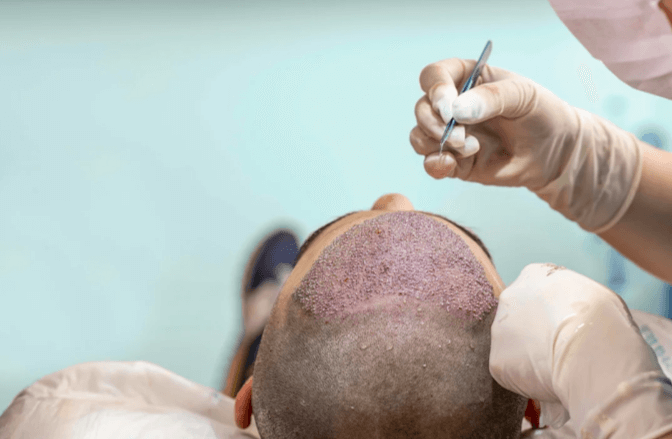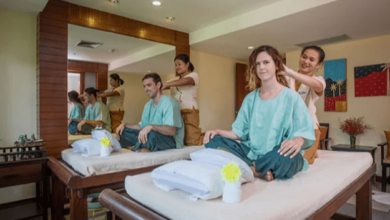Unlocking the Price Spectrum: Understanding Hair Transplant Cost Variations

Understanding the cost variations associated with this procedure is essential for those considering a hair transplant. The price of a hair transplant may vary ultimately based on several factors, ranging from the clinic’s location and reputation to the specific technique employed. By delving into these key considerations, prospective patients can gain better clarity on the financial aspects of this transformative procedure.
Factors Influencing Cost
Multiple factors influence the cost of a hair transplant, each playing a crucial role in determining the overall expense. One significant determinant is the geographic location of the clinic. A hair transplant cost is higher in urban areas with a higher cost of living. Clinics in metropolitan cities often charge premium rates compared to smaller towns.
Additionally, the surgeon’s reputation and experience can majorly impact the cost. Highly experienced surgeons with a successful and proven track record may charge even more for their expertise. Advanced technology and techniques can also contribute to higher costs, as clinics investing in state-of-the-art equipment and procedures often charge accordingly.
Types of Hair Transplant Techniques
Various techniques are used in hair transplantation, each with its cost implications. The primary methods are follicular unit transplantation (FUT) and follicular unit extraction (FUE). FUT, or strip harvesting, involves removing a strip of tissue from the donor area to extract hair follicles. Conversely, FUE involves extracting individual follicular units directly from the donor area using a customized punch tool.
Generally, FUE tends to be more expensive than FUT due to its meticulous nature and the time-intensive process. Within the FUE category, robotic-assisted procedures may incur higher costs compared to manual extraction methods due to the use of advanced technology.
Extent of Hair Loss
The amount of hair loss and the number of grafts needed significantly influence the overall cost of a hair transplant. Patients with extensive balding or those seeking dense hair restoration may require more grafts, increasing expenses. During the consultation, the surgeon assesses the degree of hair loss and recommends the number of grafts needed for optimal results, directly impacting the cost estimate.
Clinic Reputation and Amenities
The reputation and amenities offered by the clinic also contribute to the variability in hair transplant costs. Established clinics with a proven record of successful procedures and satisfied patients may charge premium rates. Clinics that provide additional amenities such as post-operative care packages, comfortable facilities, and personalized services include these costs in their overall pricing.
Consultation and Pre-operative Expenses
Before undergoing a hair transplant procedure, patients typically need to attend one or more consultations with the surgeon. These consultations may incur separate fees, contributing to the overall cost. Additionally, pre-operative expenses such as blood tests and medications may be required, depending on the clinic’s protocols and the patient’s medical history.
Understanding Pricing Structures
Hair transplant clinics employ different pricing structures, including per-graft pricing, package deals, and all-inclusive rates. Per-graft pricing is based on the number of grafts needed, while package deals may include a set number of grafts and additional services. All-inclusive rates cover the entire procedure, from pre-operative assessments to post-operative care.
Financial Considerations and Payment Options
Given the significant cost associated with hair transplantation, patients should consider their financial options before proceeding. Some clinics offer financing plans or payment arrangements to make the procedure more accessible. Patients may also explore insurance coverage options, although hair transplant procedures are typically considered elective and not covered by insurance.
Read also Phuket – The Jewel of the Andaman Sea
Quality of Aftercare Services
The quality of the clinic’s aftercare services can influence the cost of a hair transplant. Clinics that offer comprehensive post-operative care, including follow-up appointments, medications, and guidance on hair care post-procedure, may charge higher fees. Effective aftercare ensures successful outcomes and patient satisfaction, thus justifying the additional cost for many individuals.
Patient-Specific Considerations
Individual patient characteristics, such as hair texture, color, and scalp condition, can also impact the cost of a hair transplant. Patients with unique needs or specific challenges, such as scar revisions or corrective procedures from previous surgeries, may require customized treatment plans that influence pricing. During consultations, surgeons consider these patient-specific factors to provide accurate cost estimates tailored to each individual’s requirements.
Understanding the nuances of hair transplant cost variations is crucial for anyone considering this transformative procedure. Factors such as clinic location, surgeon’s expertise, chosen technique, and extent of hair loss all play pivotal roles in determining the overall expense. People can make informed decisions regarding their hair transplant journey by researching and consulting with reputable clinics. Investing in a hair transplant can be significant but can ultimately restore confidence and improve the life of those seeking a permanent solution to hair loss.





